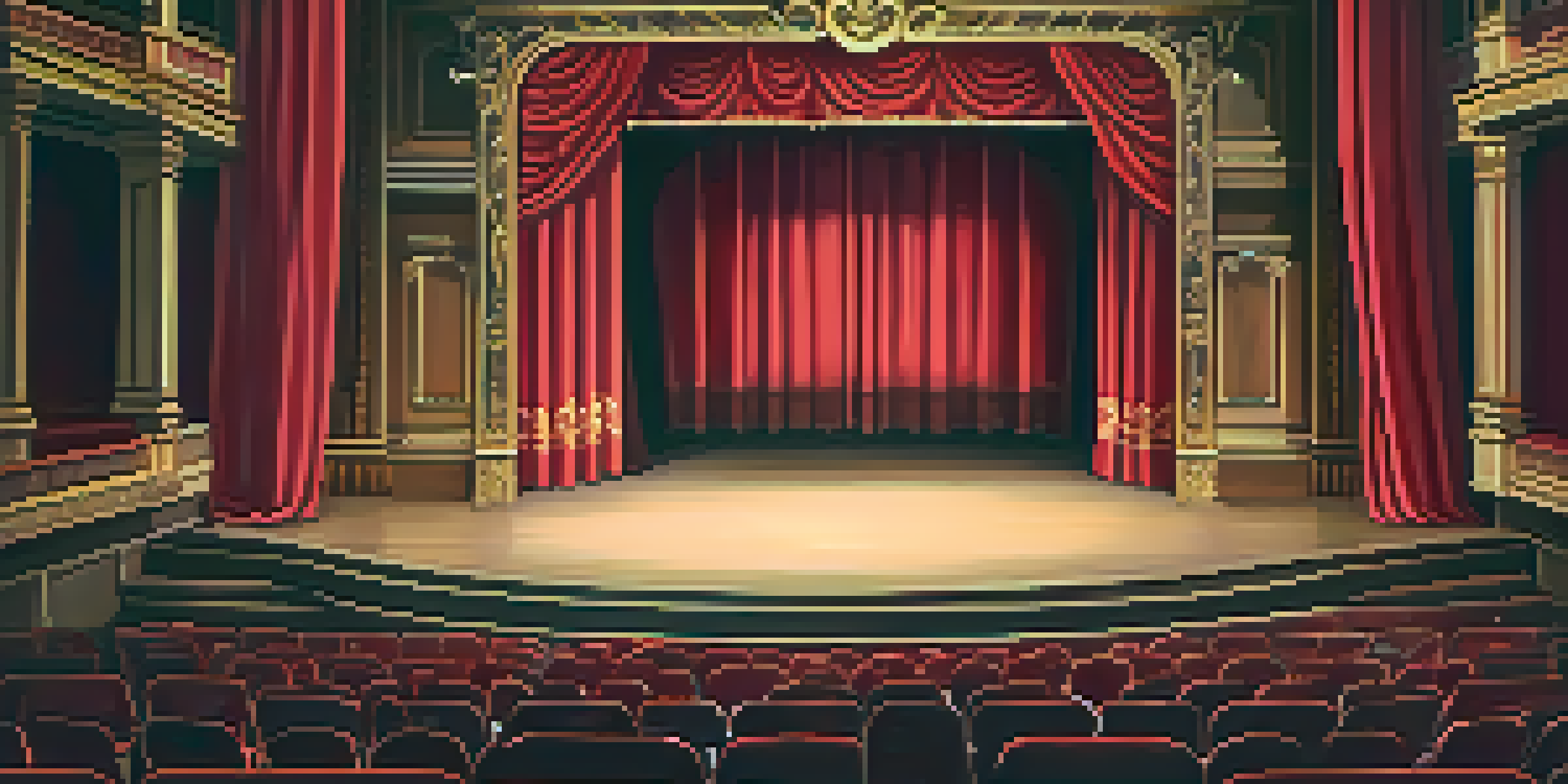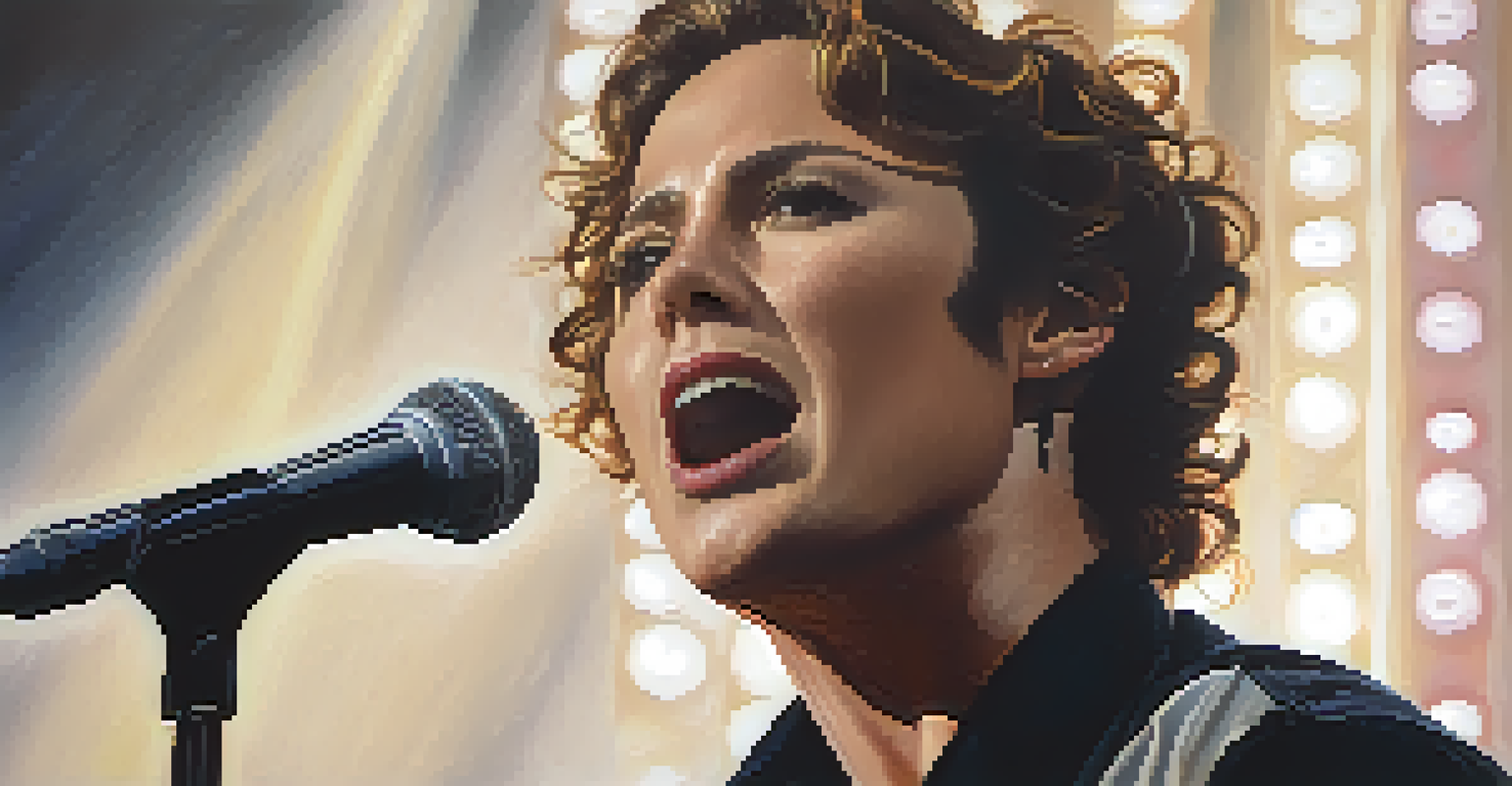Analyzing Live Performances: Techniques for Critique

Understanding the Purpose of Performance Analysis
Analyzing live performances is crucial for both performers and audiences. It helps in identifying strengths and areas for improvement, ultimately enhancing the quality of future shows. By understanding the context and intent of a performance, we can appreciate the artistry behind it more deeply.
Art is not freedom from discipline, but disciplined freedom.
For example, consider a theatrical production. A critique that focuses solely on acting without considering the directorial vision or set design might miss the mark. This holistic view ensures that all elements contribute to the overall experience, enriching our understanding.
Furthermore, performance analysis fosters a dialogue between artists and their audience. It encourages constructive feedback, creating a culture where performers feel supported in their artistic journey.
Key Elements to Observe During a Live Performance
When attending a live performance, it's essential to focus on various elements such as acting, staging, and audience engagement. Each aspect plays a pivotal role in delivering a captivating experience. For instance, consider how an actor's delivery can significantly impact the emotional weight of a scene.

Another important aspect is the technical execution, including lighting and sound design. These elements enhance the storytelling and mood, often working in tandem with the performers to create a seamless experience. Missing out on these can lead to an incomplete critique.
Importance of Performance Analysis
Analyzing live performances enhances understanding of artistry and identifies areas for improvement.
Lastly, audience reactions are a vital part of any performance. Observing how the crowd responds can provide insights into the effectiveness of the performance, revealing moments that resonate or fall flat.
Taking Notes: A Practical Approach to Critique
Taking notes during a live performance can be a game-changer for your analysis. Jotting down immediate thoughts and reactions allows you to capture the essence of the experience while it’s fresh in your mind. Consider using a simple structure: note strengths, weaknesses, and standout moments.
The only way to do great work is to love what you do.
For example, you might write about a particularly moving monologue or a scene that felt disjointed. This practice not only helps you articulate your thoughts later but also enriches your engagement with the performance. It’s like keeping a personal diary of your artistic experiences.
Remember, your notes don’t have to be extensive; bullet points or keywords can suffice. The goal is to have a reference that helps you recall specific moments when you sit down to write your full critique.
Analyzing Performance Techniques: What to Look For
When critiquing a performance, it's vital to analyze specific techniques employed by the performers. This includes vocal delivery, physicality, and emotional range. For instance, a singer's ability to hit high notes can be impressive, but how they convey emotion through their voice often resonates more deeply with the audience.
Additionally, consider the use of body language and stage presence. A performer who embodies their character fully can elevate the entire performance, making it more believable and engaging. Think of how a dancer's movements can tell a story without uttering a single word.
Key Elements of Live Performance
Focusing on acting, staging, and audience engagement is essential for delivering a captivating experience.
By breaking down these techniques, you can provide a more nuanced critique that acknowledges the skill involved in live performance. It’s about appreciating the artistry and the hard work that goes into each show.
The Role of Context in Performance Critique
Context is a crucial factor in analyzing any live performance. This includes understanding the cultural, historical, and social background of the work being presented. For example, a modern adaptation of a classic play may carry different meanings and implications than its original version.
Moreover, knowing the intent behind the performance—be it to entertain, provoke thought, or inspire—can shape your critique significantly. This context allows you to evaluate whether the performance successfully achieved its goals.
Incorporating context into your analysis not only enriches your critique but also provides a deeper appreciation for the work. It transforms your observations from surface-level judgments to thoughtful reflections grounded in a broader understanding.
Constructive Criticism: How to Offer Feedback
When it comes to critiquing live performances, offering constructive feedback is essential. This means focusing on both the positive and negative aspects of the performance while providing actionable suggestions for improvement. It’s about helping artists grow rather than simply stating what went wrong.
For example, rather than saying a singer was off-key, you might suggest that they work on breath control to enhance their vocal delivery. This approach fosters a supportive environment, encouraging performers to embrace feedback without feeling discouraged.
Constructive Feedback Matters
Offering constructive criticism fosters growth in performers and creates a supportive artistic community.
Remember, the aim of critique is to inspire growth and development. By framing your observations positively, you can contribute to an artist’s journey and help them flourish in their craft.
Documenting and Sharing Your Critique
After completing your analysis, documenting and sharing your critique is key. Whether through a blog, social media, or a personal journal, sharing your thoughts can spark discussions and engage with like-minded individuals. It’s an opportunity to express your passion for the performing arts.
When writing your critique, make sure to structure it well, starting with an introduction that captures your overall impression. Follow this with detailed observations and conclude with your final thoughts or suggestions. This clarity makes your critique accessible to others, inviting them to reflect on the performance as well.

Additionally, sharing your critique can help build a community around performance analysis. Engaging with others who have seen the same show can lead to enriching conversations and further insights into the art form.